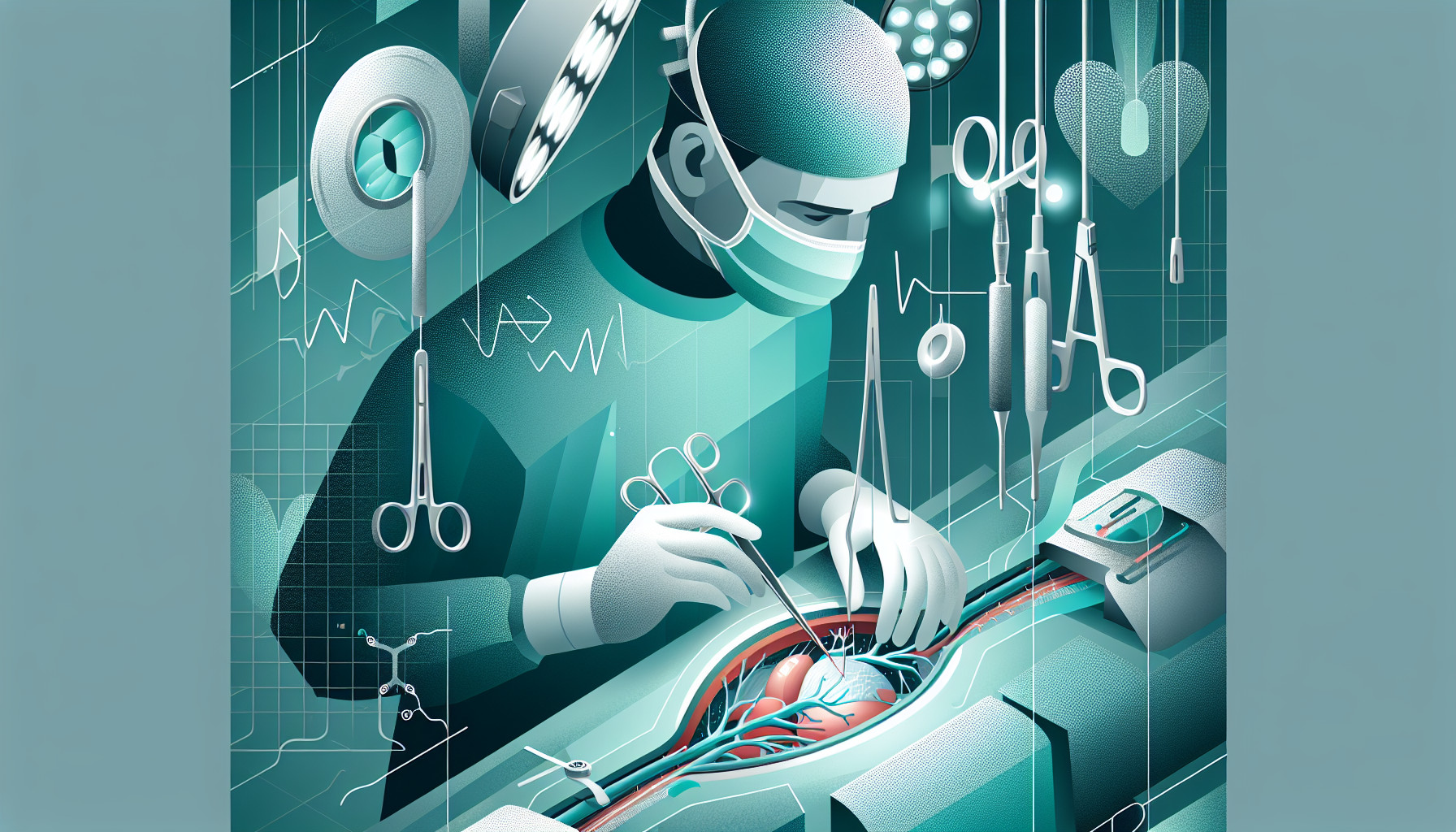Our Summary
The research paper discusses a less invasive method for creating a connection between an artery and a vein, called an arteriovenous fistula (endoAVF), which is used in dialysis treatments. Two devices, WavelinQ and Ellipsys, are used for this process. The paper reviews the anatomy involved, what should be considered before and after the procedure, how the fistula is created, and the outcomes of using endoAVF. Currently, there isn’t much data about how effective endoAVFs are compared to traditional surgical methods. But, early findings suggest that endoAVFs could be a useful tool in creating these necessary connections for dialysis treatment.
FAQs
- What is endovascular arteriovenous fistula (endoAVF) creation and why is it used?
- What are the WavelinQ and Ellipsys devices used in endoAVF creation?
- How does the clinical efficacy of endoAVFs compare to surgical AVFs?
Doctor’s Tip
A doctor might tell a patient that creating an AV fistula through endovascular methods like WavelinQ or Ellipsys can be a minimally invasive option for hemodialysis. It is important to discuss pre- and postoperative considerations with your healthcare provider to ensure the success of the procedure. Additionally, while data on the efficacy of endoAVFs compared to surgical AVFs is limited, early results suggest that endoAVFs can be a useful technique for creating AV fistulas.
Suitable For
Patients who are typically recommended for AV fistula creation include those with end-stage renal disease who require hemodialysis. This includes patients with chronic kidney disease, diabetes, hypertension, and other conditions that lead to kidney failure. AV fistulas are preferred over other forms of vascular access for hemodialysis as they have lower rates of infection and thrombosis, and have longer patency rates. Additionally, AV fistulas provide better blood flow rates, allowing for more effective hemodialysis treatments.
Timeline
Before AV fistula creation:
- Patient undergoes a thorough evaluation by a healthcare provider to determine the need for hemodialysis.
- Imaging studies may be performed to assess the anatomy of the patient’s blood vessels.
- The patient may need to undergo blood tests to ensure they are healthy enough for the procedure.
- The healthcare provider discusses the risks and benefits of AV fistula creation with the patient.
After AV fistula creation:
- Patient may experience some discomfort or pain at the site of the fistula, which should improve over time.
- The patient will need to follow specific care instructions for the fistula to ensure it functions properly.
- The patient will need to schedule regular follow-up appointments with their healthcare provider to monitor the function of the AV fistula.
- Once the AV fistula is matured and ready for use, the patient can begin hemodialysis treatments.
What to Ask Your Doctor
- What are the benefits of endovascular AV fistula creation compared to surgical AV fistula creation?
- What is the success rate of endovascular AV fistula creation?
- What are the potential complications or risks associated with endovascular AV fistula creation?
- How long does it take for an endovascular AV fistula to mature and be ready for use in hemodialysis?
- How often will I need to have follow-up appointments to monitor the progress of my endovascular AV fistula?
- Will I need any special care or precautions after the procedure to ensure the success of my endovascular AV fistula?
- How does the cost of endovascular AV fistula creation compare to traditional surgical AV fistula creation?
- Are there any specific lifestyle changes or restrictions I should be aware of after having an endovascular AV fistula created?
- How soon can I begin using my endovascular AV fistula for hemodialysis after the procedure?
- What are the long-term outcomes and durability of endovascular AV fistulas compared to surgical AV fistulas?
Reference
Authors: Tyagi R, Ahmed SS, Navuluri R, Ahmed O. Journal: Semin Intervent Radiol. 2021 Nov 24;38(5):518-522. doi: 10.1055/s-0041-1736531. eCollection 2021 Dec. PMID: 34853497
